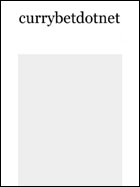Verifying social media in the middle of Egypt's revolution
Guardian Readers’ Editor Chris Elliott recently gave a lunchtime talk to assorted staff about a trip to Egypt, where he was working with local journalists on journalistic ethics and press regulation. Yesterday I blogged the first part of my notes from the talk, looking at how Chris explained that the Egyptian journalists on the ground in Cairo very much felt that, contrary to what some Western “experts” have argued, Facebook and Twitter played an absolutely key role in the revolution. The former was used to organise, and the latter used to share links to reports of the unrest from a global range of news sources, where they had an impact on the mood of the protesters.
As well as The Guardian’s reporting having an effect in Cairo via Twitter, we were reporting what was being posted from there - and there was a good debate after Chris spoke about the verification standards that you could put to information collected this way, and how it should then presented to our audience via live blogging and other means. Chris Elliott said it seemed certain that in some cases Twitter was used to spread disinformation, and draw crowds into a narrow street to give them a “damn good hiding”.
Paul Lewis was in the audience, and he asked whether Chris thought The Guardian had ever unwittingly published disinformation like that. In the debate that followed, Paul, as ever, stressed the fact that Twitter is a useful tool, but you still need to apply journalistic craft to the information you gather from it.
Laura Oliver joined in to say that the live blogging team had been immersed in the Twitter stream coming out from Egypt for some time. They had a good feel for who the key influencers, leaders and reliable sources were, “just as you would with your traditional contact book” she said.
I think this has become a fascinating problem for early 21st century journalism.
As Paul put it at the recent Media Standards Trust event on data and news sourcing, news organisations used to publish material in black and white, but now we seem to put a lot of “grey” pseudo-verified material in front of the audience and ask them to work out how much of it to trust. We wouldn’t, he suggested, report something on a live blog on the basis of someone phoning up the news desk, and being the single source for the information, so why would we do that with Twitter? Paul also suggested that “the verification bar for live news has slipped down”.
I recently saw a package on Sky News which essentially started with a disclaimer “we have no way of knowing whether these pictures are genuine, or when they were made...but...” and then went into a three minute piece that, for the viewer, implied they were 100% genuine pictures of state-sanctioned torture going on in Libya. Now I may be doing Sky a disservice, and they may have gone to great lengths to try and stand the story up, only to feel that they couldn’t quite portray it as genuine at the last minute. But to me as a viewer, it came across like “weasel words...weasel words...the report we wanted to file anyway”.
One of our moderation team made an excellent point though, about the way that the audience uses multiple sources. She said that quoting Twitter isn’t like reporting “the phone call to the office”, because it is already in the public domain and out on the internet. There is no point, she said, pretending your audience isn’t flipping around between different sources. Maybe, she argued, our role has to be more about helping people through that emerging narrative, as much as it is about verifying sources on their behalf.
As the “Arab spring” has spread, military intervention by NATO in Libya has rather stifled this debate about the role of social media in fermenting unrest and civil disobedience in North Africa and the Middle East. It has given news organisations a more conventional war campaign to report on, and I think they feel on surer footing with that. Certainly, since the bombing started, there seems to be nowhere near the level of meta-discussion about the reporting of the Libyan conflict, as there had been around the uprisings in Tunisia and Egypt.
“currybetdotnet: Best of the blog 2011” brings together over 50 of the best posts on this blog from 2011, covering topics such as live blogging, community and social media for news websites, and the future of digital media. It features write-ups of talks by Guardian journalists including Paul Lewis, Matthew Wells, Andrew Sparrow and Chris Elliot, and behind the scenes looks at Guardian products like the Facebook and iPad apps. It also has transcripts of Martin Belam's talks at EuroIA, the UPA conference, Polish IA Summit, Content Strategy Forum 2011, FutureEverything and Hacks/Hackers London.
“currybetdotnet: Best of the blog 2011” for Kindle is £1.92.

Great post Martin, some really interesting points there. I've been sceptical in the past of the role Twitter allows apathetic westerners to feel they've played some role in a distant revolution, but the suggestion that it's more useful when curated is something really key in a media/society dominated by the question of relevancy of 'traditional' newspaper work.